
Lex & yacc – John R. Levine, Tony Mason, Doug Brown, O’reilly
Download links:
RAPIDSHARE:
http://rapidshare.com/files/314266419/O_Reilly_-_Lex_and_Yacc.rar
Password:http://just3-2.blogspot.com/
MEDIAFIRE:
http://www.mediafire.com/?zwyloj0wjc3
Operating System Concepts- Abraham Silberchatz, Peter B. Galvin, Greg Gagne 7th Edition, John Wiley.
0 comments Posted by Arya2 at 4:04 AM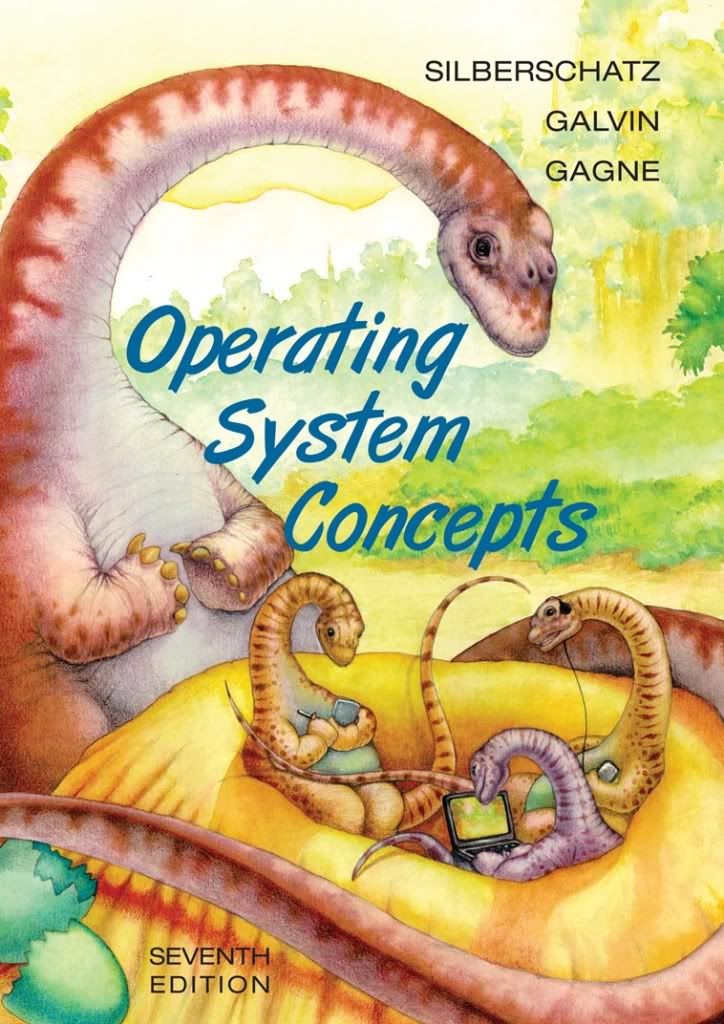
Operating System Concepts- Abraham Silberchatz, Peter B. Galvin, Greg Gagne 7th Edition, John Wiley.
Download links:
RAPIDSHARE:
http://rapidshare.com/files/314251949/Operating_System_Concepts_7_th_Edition.rar
Password:http://just3-2.blogspot.com/
OR
Mediafire:
http://www.mediafire.com/?jykknwxlzmz
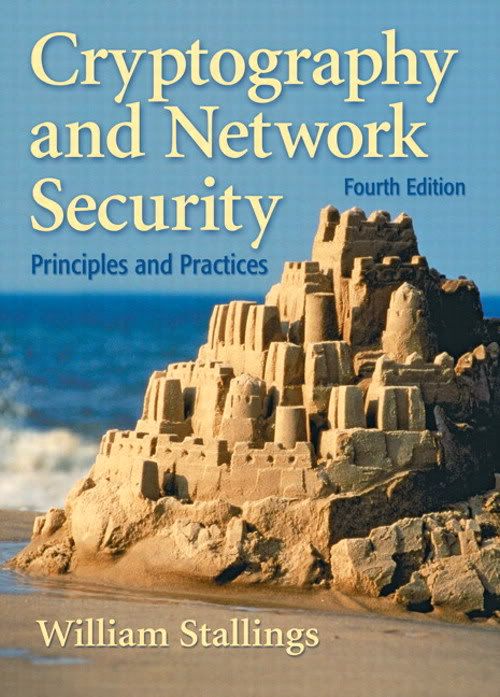
Cryptography and Network Security
Dowload Link:
RAPIDSHARE:
http://rapidshare.com/files/313274448/Prentice.Hall.Cryptography.and.Network.Security.4th.Edition.part1.rar
http://rapidshare.com/files/313277047/Prentice.Hall.Cryptography.and.Network.Security.4th.Edition.part2.rar
MEDIAFIRE:
http://www.mediafire.com/?fyt4kxzgdnt
Operating Systems – Internal and Design Principles Stallings, Fifth Edition–2005
0 comments Posted by Arya2 at 7:11 AM
Operating Systems – Internal and Design Principles Stallings, Fifth Edition–2005
Download links:
RAPIDSHARE:
http://rapidshare.com/files/312059203/Operating_Systems_____Internal_and_Design_Principles_Stallings__Sixth_Edition.part1.rar
http://rapidshare.com/files/312378267/Operating_Systems_____Internal_and_Design_Principles_Stallings__Sixth_Edition.part2.rar
or
MEDIAFIRE:
http://www.mediafire.com/?wqmmnu3oa5t
Note:
Both 5th and 6th editions are having same content.
Operating Systems – Internal and Design Principles Stallings, Sixth Edition
0 comments Posted by Arya2 at 6:58 AM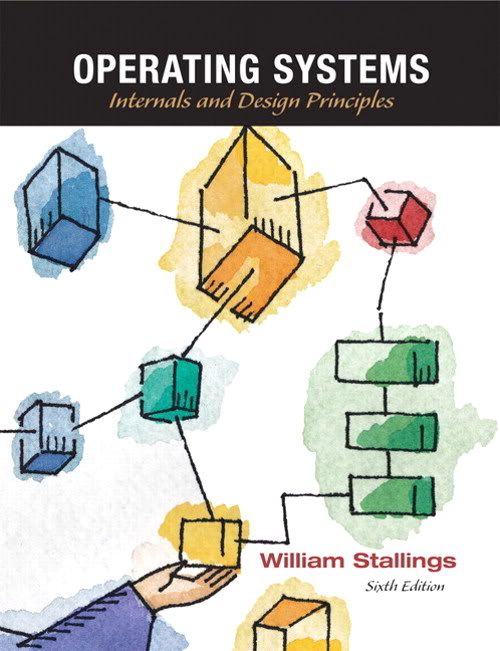
Operating Systems – Internal and Design Principles Stallings, Sixth Edition
Download links:
RAPIDSHARE:
http://rapidshare.com/files/312059203/Operating_Systems_____Internal_and_Design_Principles_Stallings__Sixth_Edition.part1.rar
http://rapidshare.com/files/312378267/Operating_Systems_____Internal_and_Design_Principles_Stallings__Sixth_Edition.part2.rar
or
MEDIAFIRE:
http://www.mediafire.com/?wqmmnu3oa5t
Data Communications and Computer Networks - For Computer Scientists and Engineers
0 comments Posted by Arya2 at 5:38 AM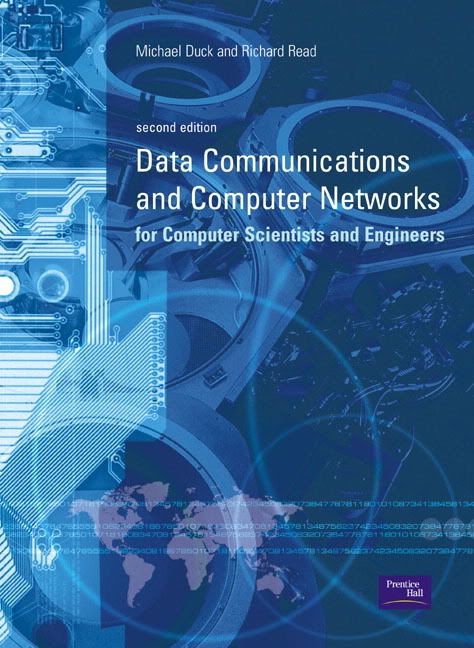
Data Communications and Computer Networks - For Computer Scientists and Engineers
DOWNLOAD Links:
RAPIDSHARE
http://rapidshare.com/files/312018255/Data_Communications_and_Computer_Networks_-_For_Computer_Scientists_and_Engineers.rar
OR
MEDIAFIRE:
http://www.mediafire.com/?xyjmm01tw3z
Artificial Intelligence A Modern Approach Stuart J. Russell and Peter Norvi
0 comments Posted by Arya2 at 1:51 AM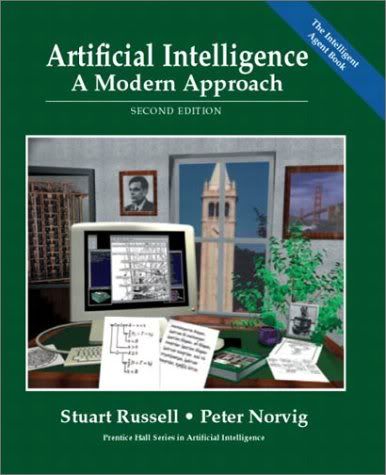
Artificial Intelligence A Modern Approach Stuart J. Russell and Peter Norvi
Download link:
MEDIAFIRE Links:
http://www.mediafire.com/?kzm2jim0tmm
OR
RAPIDSHARE liNKS:
http://rapidshare.com/files/311891454/Artificial_Intelligence_A_Modern_Approach_Stuart_J._Russell_and_Peter_Norvig.part1.rar
http://rapidshare.com/files/311933145/Artificial_Intelligence_A_Modern_Approach_Stuart_J._Russell_and_Peter_Norvig.part2.rar
http://rapidshare.com/files/311941195/Artificial_Intelligence_A_Modern_Approach_Stuart_J._Russell_and_Peter_Norvig.part3.rar
http://rapidshare.com/files/311944675/Artificial_Intelligence_A_Modern_Approach_Stuart_J._Russell_and_Peter_Norvig.part4.rar

Computer Networks 4th Ed - Andrew S. Tanenbaum
DOWNLOAD LINK:
RAPIDSHARE:
http://rapidshare.com/files/311567783/Computer_Networks_4th_Ed_-_Andrew_S._Tanenbaum.rar
OR
MEDIAFIRE:
http://www.mediafire.com/?zoayfjlnjlm
Modern.Operating.Systems_AndrewS.Tanenbaum_.2nd.Edition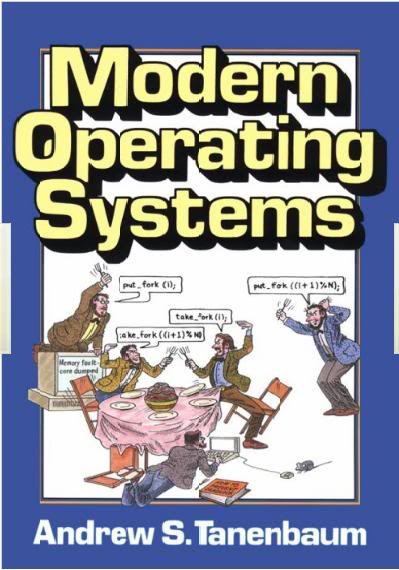
Modern.Operating.Systems_AndrewS.Tanenbaum_.2nd.Edition
Download Link:
RAPIDSHARE:
http://rapidshare.com/files/311571348/Modern.Operating.Systems_AndrewS.Tanenbaum_.2nd.Edition.rar
OR
MEDIAFIRE:
http://www.mediafire.com/?yt5hfqkoytm
Operating Systems:
OPERATING SYSTEMS
UNIT I :
Computer System and Operating System Overview: Overview of computer operating systems operating systems functions protection and security distributed systems special purpose systems operating systems structures and systems calls operating systems generation
UNIT II :
Process Management – Process concepts threads, scheduling-criteria algorithms, their evaluation,
Thread scheduling, case studies UNIX, Linux, Windows
UNIT III :
Concurrency : Process synchronization, the critical- section problem, Peterson’s Solution, synchronization Hardware, semaphores, classic problems of synchronization, monitors, Synchronization examples, atomic transactions. Case studies UNIX, Linux, Windows
UNIT IV :
Memory Management : Swapping, contiguous memory allocation, paging, structure of the page table , segmentation, virtual memory, demand paging, page-Replacement, algorithms, case studies UNIX, Linux, Windows
UNIT V :
Principles of deadlock – system model, deadlock characterization, deadlock prevention, detection and avoidance, recovery form deadlock,
I/O systems, Hardware, application interface, kernel I/O subsystem, Transforming I/O requests Hardware operation, STREAMS, performance.
UNIT VI :
File system Interface- the concept of a file, Access Methods, Directory structure, File system mounting, file sharing, protection.
File System implementation- File system structure, file system implementation, directory implementation, directory implementation, allocation methods, free-space management, efficiency and performance, case studies. UNIX, Linux, Windows
UNIT VII :
Mass-storage structure overview of Mass-storage structure, Disk structure, disk attachment disk scheduling, swap-space management, RAID structure, stable-storage implementation, Tertiary storage structure.
UNIT VIII :
Protection : Protection, Goals of Protection, Principles of Protection, Domain of protection Access Matrix, Implementation of Access Matrix, Access control, Revocation of Access Rights, Capability- Based systems, Language – Based Protection,
Security- The Security problem, program threats, system and network threats cryptography as a security tool, user authentication, implementing security defenses, firewalling to protect systems and networks, computer –security classifications, case studies UNIX, Linux, Windows
TEXT BOOKS :
1. Operating System Concepts- Abraham Silberchatz, Peter B. Galvin, Greg Gagne 7th Edition, John Wiley.
2. Operating systems- A Concept based Approach-D.M.Dhamdhere, 2nd Edition, TMH
REFERENCES :
1. Operating Systems’ – Internal and Design Principles Stallings, Fifth
Edition–2005, Pearson education/PHI
2. Operating System A Design Approach-Crowley, TMH.
3. Modern Operating Systems, Andrew S Tanenbaum 2nd edition
Pearson/PHI.
Compiler Design:
COMPILER DESIGN
UNIT – I
Overview of Compilation: Phases of Compilation – Lexical Analysis, Regular Grammar and regular expression for common programming language features, pass and Phases of translation, interpretation, bootstrapping, data structures in compilation – LEX lexical analyzer generator.
UNIT – II
Top down Parsing : Context free grammars, Top down parsing – Backtracking, LL (1), recursive descent parsing, Predictive parsing, Preprocessing steps required for predictive parsing.
UNIT – III
Bottom up parsing : Shift Reduce parsing, LR and LALR parsing, Error recovery in parsing , handling ambiguous grammar, YACC – automatic parser generator.
UNIT – IV
Semantic analysis : Intermediate forms of source Programs – abstract syntax tree, polish notation and three address codes. Attributed grammars, Syntax directed translation, Conversion of popular Programming languages language Constructs into Intermediate code forms, Type checker.
UNIT – V
Symbol Tables : Symbol table format, organization for block structures languages, hashing, tree structures representation of scope information. Block structures and non block structure storage allocation: static, Runtime stack and heap storage allocation, storage allocation for arrays, strings and records.
UNIT – VI
Code optimization : Consideration for Optimization, Scope of Optimization, local optimization, loop optimization, frequency reduction, folding, DAG representation.
UNIT – VII
Data flow analysis : Flow graph, data flow equation, global optimization, redundant sub expression elimination, Induction variable elements, Live variable analysis, Copy propagation.
UNIT – VIII
Object code generation : Object code forms, machine dependent code optimization, register allocation and assignment generic code generation algorithms, DAG for register allocation.
TEXT BOOKS :
1. Principles of compiler design -A.V. Aho . J.D.Ullman; Pearson Education.
2. Modern Compiler Implementation in C- Andrew N. Appel, Cambridge
University Press.
REFERENCES :
1. lex &yacc – John R. Levine, Tony Mason, Doug Brown, O’reilly
2. Modern Compiler Design- Dick Grune, Henry E. Bal, Cariel T. H. Jacobs,
Wiley dreamtech.
3. Engineering a Compiler-Cooper & Linda, Elsevier.
4. Compiler Construction, Louden, Thomson.
Computer Networks:
COMPUTER NETWORKS
UNIT – I
Introduction : OSI, TCP/IP and other networks models, Examples of Networks: Novell Networks ,Arpanet, Internet, Network Topologies WAN, LAN, MAN.
UNIT - II
Physical Layer : Transmission media copper, twisted pair wireless, switching and encoding asynchronous communications; Narrow band, broad band ISDN and ATM.
UNIT - III
Data link layer : Design issues, framing, error detection and correction, CRC, Elementary Protocol-stop and wait, Sliding Window, Slip, Data link layer in HDLC, Internet, ATM.
UNIT - IV
Medium Access sub layer : ALOHA, MAC addresses, Carrier sense multiple access. IEEE 802.X Standard Ethernet, wireless LANS. Bridges
UNIT - V
Network Layer : Virtual circuit and Datagram subnets-Routing algorithm shortest path routing, Flooding, Hierarchical routing, Broad cast, Multi cast, distance vector routing.
UNIT – VI
Dynamic routing – Broadcast routing. Rotary for mobility. Congestion, Control Algorithms – General Principles – of Congestion prevension policies. Internet working: The Network layer in the internet and in the ATM Networks.
UNIT –VII
Transport Layer: Transport Services, Connection management, TCP and UDP protocols; ATM AAL Layer Protocol.
UNIT – VIII
Application Layer – Network Security, Domain name system, SNMP, Electronic Mail; the World WEB, Multi Media.
TEXT BOOKS :
1. Computer Networks — Andrew S Tanenbaum, 4th Edition. Pearson
Education/PHI
2. Data Communications and Networking – Behrouz A. Forouzan.Third
Edition TMH.
REFERENCES :
1. An Engineering Approach to Computer Networks-S.Keshav, 2nd Edition,
Pearson Education
2. Understanding communications and Networks, 3rd Edition, W.A. Shay,
Thomson
Information Security:
INFORMATION SECURITY
UNIT - I
Security Attacks (Interruption, Interception, Modification and Fabrication), Security Services (Confidentiality, Authentication, Integrity, Non-repudiation, access Control and Availability) and Mechanisms, A model for Internetwork security, Internet Standards and RFCs, Buffer overflow & format string vulnerabilities, TCP session hijacking, ARP attacks, route table modification, UDP hijacking, and man-in-the-middle attacks.
UNIT - II
Conventional Encryption Principles, Conventional encryption algorithms, cipher block modes of operation, location of encryption devices, key distribution Approaches of Message Authentication, Secure Hash Functions and HMAC.
UNIT - III
Public key cryptography principles, public key cryptography algorithms, digital signatures, digital Certificates, Certificate Authority and key management Kerberos, X.509 Directory Authentication Service.
UNIT - IV
Email privacy: Pretty Good Privacy (PGP) and S/MIME.
UNIT - V
IP Security Overview, IP Security Architecture, Authentication Header, Encapsulating Security Payload, Combining Security Associations and Key Management.
UNIT - VI
Web Security Requirements, Secure Socket Layer (SSL) and Transport Layer Security (TLS), Secure Electronic Transaction (SET).
UNIT - VII
Basic concepts of SNMP, SNMPv1 Community facility and SNMPv3.
Intruders, Viruses and related threats.
UNIT - VIII
Firewall Design principles, Trusted Systems. Intrusion Detection Systems.
TEXT BOOKS :
1. Network Security Essentials (Applications and Standards) by William
Stallings Pearson Education.
2. Hack Proofing your network by Ryan Russell, Dan Kaminsky, Rain Forest
Puppy, Joe Grand, David Ahmad, Hal Flynn Ido Dubrawsky, Steve
W.Manzuik and Ryan Permeh, wiley Dreamtech
REFERENCES :
1. Fundamentals of Network Security by Eric Maiwald (Dreamtech press)
2. Network Security - Private Communication in a Public World by Charlie
Kaufman, Radia Perlman and Mike Speciner, Pearson/PHI.
3. Cryptography and network Security, Third edition, Stallings, PHI/Pearson
4. Principles of Information Security, Whitman, Thomson.
5. Network Security: The complete reference, Robert Bragg, Mark Rhodes,
TMH
6. Introduction to Cryptography, Buchmann, Springer.
Artificial Intelligence and Neural Networks:
ARTIFICIAL INTELLIGENCE AND NEURAL NETWORKS
UNIT - I
Introduction : AI problems, foundation of AI and history of AI intelligent agents: Agents and Environments,the concept of rationality, the nature of environments, structure of agents, problem solving agents, problemformulation.
UNIT - II
Searching : Searching for solutions, uniformed search strategies – Breadth first search, depth first Search. Search with partial information (Heuristic search) Greedy best first search, A* search Game Playing: Adversial search, Games, minimax, algorithm, optimal decisions in multiplayer games, Alpha-Beta pruning, Evaluation functions, cutting of search.
UNIT - III
Knowledge Representation & Reasons logical Agents, Knowledge – Based Agents, the Wumpus world, logic, propositional logic, Resolution patterns in propos ional logic, Resolution, Forward & Backward. Chaining.
UNIT - IV
First order logic. Inference in first order logic, propositional Vs. first order inference, unification & lifts forward chaining, Backward chaining, Resolution.
UNIT - V
Characteristics of Neural Networks, Historical Development of Neural Networks Principles, Artificial Neural Networks: Terminology, Models of Neuron, Topology, Basic Learning Laws, Pattern Recognition Problem, Basic Functional Units, Pattern Recognition Tasks by the Functional Units.
UNIT - VI
Feedforward Neural Networks:
Introduction, Analysis of pattern Association Networks, Analysis of Pattern Classification Networks, Analysis of pattern storage Networks. Analysis of Pattern Mapping Networks.
UNIT - VII
Feedback Neural Networks
Introduction, Analysis of Linear Autoassociative FF Networks, Analysis of Pattern Storage Networks.
UNIT - VIII
Competitive Learning Neural Networks & Complex pattern Recognition
Introduction, Analysis of Pattern Clustering Networks, Analysis of Feature
Mapping Networks, Associative Memory.
TEXT BOOKS :
1. Artificial Intelligence – A Modern Approach. Second Edition, Stuart Russel, Peter Norvig, PHI/ Pearson Education.
2. Artificial Neural Networks B. Yagna Narayana, PHI
REFERENCES :
1. Artificial Intelligence , 2nd Edition, E.Rich and K.Knight (TMH).
2. Artificial Intelligence and Expert Systems – Patterson PHI.
3. Expert Systems: Principles and Programming- Fourth Edn, Giarrantana/ Riley, Thomson.
4. PROLOG Programming for Artificial Intelligence. Ivan Bratka- Third Edition – Pearson Education.
5.Neural Networks Simon Haykin PHI
6. Artificial Intelligence, 3rd Edition, Patrick Henry Winston., Pearson Edition.
Object Oriented Analysis and Design:
OBJECT ORIENTED ANALYSIS AND DESIGN
UNIT - I
Introduction to UML : Importance of modeling, principles of modeling, object oriented modeling, conceptual model of the UML, Architecture, Software Development Life Cycle.
UNIT - II
Basic Structural Modeling : Classes, Relationships, common Mechanisms, and diagrams.
Advanced Structural Modeling : Advanced classes, advanced relationships, Interfaces, Types and Roles, Packages.
UNIT - III
Class & Object Diagrams : Terms, concepts, modeling techniques for Class & Object Diagrams.
UNIT- IV
Basic Behavioral Modeling-I : Interactions, Interaction diagrams.
UNIT - V
Basic Behavioral Modeling-II : Use cases, Use case Diagrams, Activity
Diagrams.
UNIT - VI
Advanced Behavioral Modeling : Events and signals, state machines, processes and Threads, time and space, state chart diagrams.
UNIT-VII
Architectural Modeling : Component, Deployment, Component diagrams and Deployment diagrams.
UNIT - VIII
Case Study : The Unified Library application.
TEXT BOOKS :
1. Grady Booch, James Rumbaugh, Ivar Jacobson : The Unified Modeling
Language User Guide, Pearson Education.
2. Hans-Erik Eriksson, Magnus Penker, Brian Lyons, David Fado: UML 2
Toolkit, WILEY-Dreamtech India Pvt. Ltd.
REFERENCE BOOKS:
1. Meilir Page-Jones: Fundamentals of Object Oriented Design in UML,
Pearson Education.
2. Pascal Roques: Modeling Software Systems Using UML2, WILEY-
Dreamtech India Pvt. Ltd.
3. Atul Kahate: Object Oriented Analysis & Design, The McGraw-Hill
Companies.
4. Mark Priestley: Practical Object-Oriented Design with UML,TATA
McGrawHill
5. Appling UML and Patterns: An introduction to Object – Oriented Analysis
and Design and Unified Process, Craig Larman, Pearson Education.
computer Networks and Case Tools Lab:
COMPUTER NETRWORKS AND CASE TOOLS LAB
Objective:
• To Understand the functionalities of various layers of OSI model
• To inculcate object oriented software design
System/ Software Requirement
• Intel based desktop PCs LAN CONNECTED with minimum of 166 MHZ or faster processor with atleast 64 MB RAM and 100 MB free disk space
• Tools Such as Rational Rose
Part - A
1. Implement the data link layer framing methods such as character, character stuffing and bit stuffing.
2. Implement on a data set of characters the three CRC polynomials – CRC 12, CRC 16 and CRC CCIP .
3. Implement Dijkstra ‘s algorithm to compute the Shortest path thru a graph.
4. Take an example subnet graph with weights indicating delay between nodes. Now obtain Routing table art each node using distance vector routing algorithm
5. Take an example subnet of hosts . Obtain broadcast tree for it.
6. Take a 64 bit playing text and encrypt the same using DES algorithm .
7. Write a program to break the above DES coding
8. Using RSA algorithm Encrypt a text data and Decrypt the same .
Part - B
1. The student should take up the case study of Unified Library application which is mentioned in the theory, and Model it in different views i.e Use case view, logical view, component view, Deployment view, Database design, forward and Reverse Engineering, and Generation of documentation of
the project.
2. Student has to take up another case study of his/her own interest and do the same what ever mentioned in first problem. Some of the ideas regarding case studies are given in reference books which were mentioned in theory syllabus can be referred for some idea.
Note : The analysis, design, coding, documentation, database design of mini project which will be carried out in 4th year should be done in object-oriented approach using UML and by using appropriate software which supports UML, otherwise the mini project will not be evaluated.
Operating systems and Compiler Design Lab:
OPERATING SYSTEMS AND COMPILER DESIGN LAB
Objective :
• To provide an understanding of the language translation peculiarities by designing a complete translator for a mini language.
• To provide an understanding of the design aspects of operating system
Recommended Systems/Software Requirements:
• Intel based desktop PC with minimum of 166 MHZ or faster processor with atleast 64 MB RAM and 100 MB free disk space
• C++ complier and JDK kit
Part - A
1. Simulate the following CPU scheduling algorithms
a) Round Robin b) SJF c) FCFS d) Priority
2. Simulate all file allocation strategies
a) Sequentialb) Indexed c) Linked
3. Simulate MVT and MFT
4. Simulate all File Organization Techniques
a) Single level directory b) Two level c) Hierarchical d) DAG
5. Simulate Bankers Algorithm for Dead Lock Avoidance
6. Simulate Bankers Algorithm for Dead Lock Prevention
7. Simulate all page replacement algorithms
a) FIFO b) LRU c) LFU Etc. …
8. Simulate Paging Technique of memory management.
PART - B
Consider the following mini Language, a simple procedural high-level language, only operating on integer
data, with a syntax looking vaguely like a simple C crossed with Pascal. The syntax of the language is
defined by the following BNF grammar:
| {
|
|
| if
| (
Comments (zero or more characters enclosed between the standard C/Java-style comment brackets /
*...*/) can be inserted. The language has rudimentary support for 1-dimensional arrays. The declaration
int a[3] declares an array of three elements, referenced as a[0], a[1] and a[2]. Note also that you should
worry about the scoping of names.
A simple program written in this language is:
{ int a[3],t1,t2;
t1=2;
a[0]=1; a[1]=2; a[t1]=3;
t2=-(a[2]+t1*6)/(a[2]-t1);
if t2>5 then
print(t2);
else {
int t3;
t3=99;
t2=-25;
print(-t1+t2*t3); /* this is a comment
on 2 lines */
} endif }
1. Design a Lexical analyzer for the above language. The lexical analyzer should ignore redundant
spaces, tabs and newlines. It should also ignore comments. Although the syntax specification
states that identifiers can be arbitrarily long, you may restrict the length to some reasonable value.
2. Implement the lexical analyzer using JLex, flex or lex or other lexical analyzer generating tools.
3. Design Predictive parser for the given language
4. Design LALR bottom up parser for the above language.
5. Convert the BNF rules into Yacc form and write code to generate abstract syntax tree.
6. Write program to generate machine code from the abstract syntax tree generated by the parser. The following instruction set may be considered as target code.
The following is a simple register-based machine, supporting a total of 17 instructions. It has three distinct internal storage areas. The first is the set of 8 registers, used by the individual instructions as detailed below, the second is an area used for the storage of variables and the third is an area used
for the storage of program. The instructions can be preceded by a label. This consists of an integer in the range 1 to 9999 and the label is followed by a colon to separate it from the rest of the instruction. The numerical label can be used as the argument to a jump instruction, as detailed below.
In the description of the individual instructions below, instruction argument types are specified as follows :
R
specifies a register in the form R0, R1, R2, R3, R4, R5, R6 or R7 (or r0, r1, etc.).
L
specifies a numerical label (in the range 1 to 9999).
V
specifies a “variable location” (a variable number, or a variable location pointed to by a register - see
below).
A
specifies a constant value, a variable location, a register or a variable location pointed to by a register (an indirect address). Constant values are specified as an integer value, optionally preceded by a minus sign, preceded by a # symbol. An indirect address is specified by an @ followed by a register.
So, for example, an A-type argument could have the form 4 (variable number 4), #4 (the constant value 4), r4 (register 4) or @r4 (the contents of register 4 identifies the variable location to be accessed).
The instruction set is defined as follows:
LOAD A,R
loads the integer value specified by A into register R.
STORE R,V
stores the value in register R to variable V.
OUT R
outputs the value in register R.
NEG R
negates the value in register R.
ADD A,R
adds the value specified by A to register R, leaving the result in register R.
SUB A,R
subtracts the value specified by A from register R, leaving the result in register R.
MUL A,R
multiplies the value specified by A by register R, leaving the result in register R.
DIV A,R
divides register R by the value specified by A, leaving the result in register R.
JMP L
causes an unconditional jump to the instruction with the label L.
JEQ R,L
jumps to the instruction with the label L if the value in register R is zero.
JNE R,L
jumps to the instruction with the label L if the value in register R is not zero.
JGE R,L
jumps to the instruction with the label L if the value in register R is greater than or equal to zero.
JGT R,L
jumps to the instruction with the label L if the value in register R is greater than zero.
JLE R,L
jumps to the instruction with the label L if the value in register R is less than or equal to zero.
JLT R,L
jumps to the instruction with the label L if the value in register R is less than zero.
NOP
is an instruction with no effect. It can be tagged by a label.
STOP
stops execution of the machine. All programs should terminate by executing a STOP instruction.

